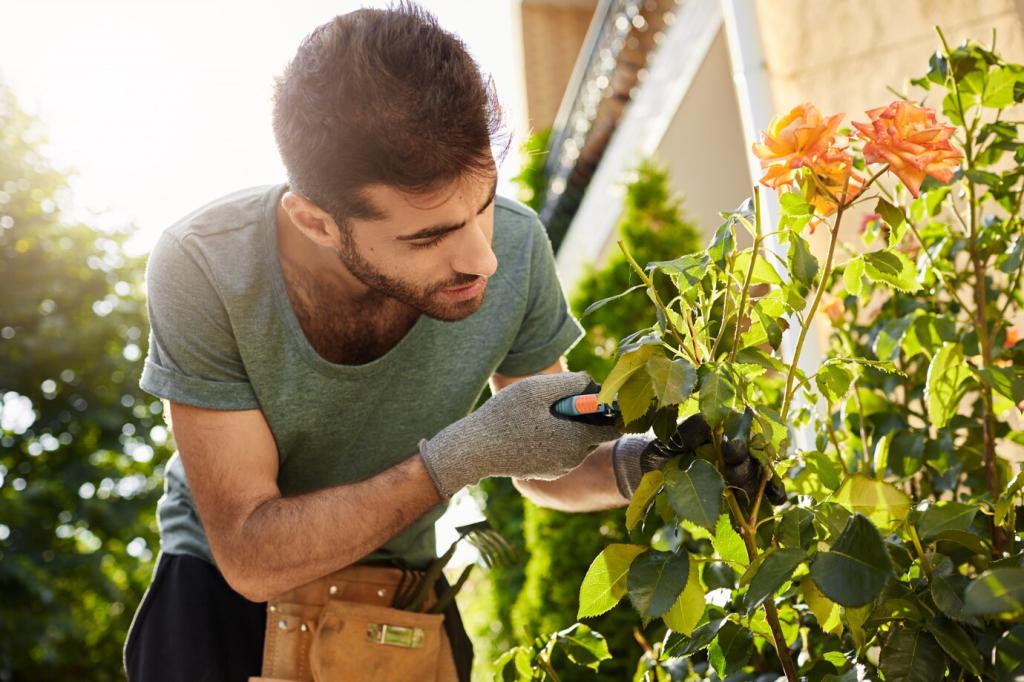
Smart Gardening Techniques for City Living
In the heart of the city, space is a luxury and nature can seem just out of reach. Yet, with the right smart gardening techniques, even the smallest urban home can become a green oasis. This guide explores practical and innovative methods for growing lush, healthy plants in urban settings, harnessing technology and creative strategies tailored for city dwellers.
Maximizing Limited Space for Urban Gardens
Vertical Gardens: Going Upwards, Not Outwards
Traditional gardening requires horizontal land, but city living rarely provides this luxury. Vertical gardens make it possible to grow a multitude of plants against walls, fences, or even hanging structures. Utilizing shelves, trellises, and stackable planters, gardeners can create layers of green without sacrificing valuable floor space. This technique is ideal for herbs, leafy greens, and trailing flowers, and also helps improve air quality inside apartments by introducing more foliage into limited environments. Urban dwellers find that vertical gardens add visual interest and a sense of tranquility to their homes while maximizing every possible inch.
Container Gardening for Flexibility
Container gardening is essential for those with patios, rooftops, or even sunny windowsills. Pots and planter boxes of various sizes allow for the cultivation of everything from tomatoes to succulents. The mobility of containers means plants can be moved to chase the sun, escape harsh weather, or just revitalize a part of the home. Choosing lightweight, self-watering pots makes maintenance easier, especially for those with unpredictable schedules. Container gardening gives urbanites unparalleled flexibility, providing the opportunity to experiment and rearrange their plant collection whenever needed.
Smart Placement and Microclimates
Leveraging different areas of your home to create microclimates opens up new possibilities for urban gardening. By observing how light, shade, and wind affect specific spots throughout the day, you can place plants where they’ll thrive best. South-facing windows become havens for sun-loving plants, while shaded corners are perfect for ferns and mosses. Balcony railings or building edges may shield sensitive greens from strong winds, making it possible to nurture a diverse range of species. Careful placement maximizes growth and conserves resources, turning every nook and cranny into a potential green zone.
Integrating Technology into Urban Gardening
Automated Irrigation Systems
One of the greatest challenges in city gardening is maintaining a consistent watering schedule, especially for those with busy lifestyles or frequent travels. Automated irrigation systems use timers, moisture sensors, and even smartphone apps to deliver the exact amount of water plants need. These systems reduce both water waste and plant stress, ensuring consistent growth and healthy development. DIY drip lines or advanced pre-made kits can be adapted to containers, raised beds, or vertical arrangements, allowing maximum customization. With automation, the guesswork is removed, and urban gardens can flourish effortlessly.
Smart Soil Monitors and Plant Sensors
Plant-specific sensors provide real-time feedback on the health of your urban oasis. These gadgets measure soil moisture, temperature, light exposure, and sometimes even pH levels, connecting wirelessly to smartphones or home assistants. They alert you when your basil needs more sun or if the soil for your succulents is too damp. This information takes the mystery out of successful urban gardening and enables precise interventions. By leveraging data, city gardeners can avoid common pitfalls such as overwatering or insufficient lighting, leading to healthier, more resilient plants.
Gardening Apps and Virtual Planning Tools
Portable devices become powerful gardening allies through the use of specialized apps and planning software. From identifying unknown plants with a photo to designing the ideal garden layout, these tools streamline the entire urban gardening process. Apps track watering schedules, remind you of fertilization dates, and provide tailored advice based on your climate. Virtual garden planners help visualize the maximum potential of your balcony or living room before a single pot is purchased. By integrating these digital solutions, urban gardeners overcome learning curves and enjoy sustainable, beautiful spaces year-round.
Composting in Small Spaces
Composting transforms kitchen scraps and garden waste into rich, natural fertilizer, improving soil health and reducing landfill contributions. Even in apartments or condos, compact indoor composters or worm bins make it possible to recycle organic material without odor or mess. Nutrient-rich compost replenishes valuable minerals depleted from container soils and supports thriving, productive gardens. For city dwellers, composting is a key step towards closing the loop—turning waste generated at home into nourishment for future harvests.
Water Conservation Strategies
Urban gardeners face the challenge of limited resources and, in many areas, water restrictions. Efficient watering methods such as drip systems, mulch, and the use of drought-tolerant plants make every drop count. Collecting rainwater in barrels or small collection systems is another effective way to reduce reliance on municipal water. Watering in the early morning or late evening minimizes evaporation, while grouping plants with similar needs together ensures efficient distribution. Through careful practices, city gardens remain lush and productive without straining essential supplies.
Natural Pest Management Solutions
Chemical pesticides are often impractical or unsafe in city environments, particularly for food gardening. Eco-friendly alternatives, such as introducing beneficial insects, using organic sprays, or planting natural deterrents, offer effective control without harming the ecosystem. Companion planting, or positioning certain plants together to repel pests, can be thoughtfully applied even in compact urban spaces. Integrated pest management combines observation, prevention, and intervention methods to keep gardens healthy. Urban gardeners thus play a role in supporting urban biodiversity while keeping their plants safe.
Previous slide
Next slide

